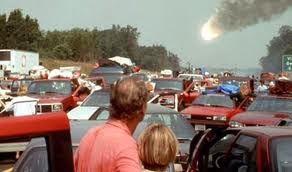Tonight March 5th, marks the near earth passing of an enormous asteroid known as 2014 DX110 around 21:00 (GMT). With the approximate size of 3 double Decker buses or roughly 20-40 meters in diameter, the near Earth object will travel at a super speed of 33,000mph and a distance of 217,000 miles away at its closest from Earth, that's 9/10th of the distance to the Moon according to Lindley Johnson with NASA's Planetary Science Division in Washington D.C.
(The orbital path and position of Apollo NEO asteroid 2014 DX110 just a
week prior to discovery. Credit- Created using NASA/JPL’s Solar System
Dynamics Small-Body Database Browser)
Astronomers, Scientists and Researchers are confident that this near earth object is no threat to the Earth, a good thing considering its size, its nothing Bruce Willis need concern over as Nasa's numbers show a very, very slim chance of impact as shown here: http://neo.jpl.nasa.gov/risk/2014dx110.html
The event can be viewed with a pretty good telescope but its unlikely to be seen by simply looking skyward. It can also be viewed live online with the Virtual Telescope or by visiting Slooh Events the webcast of the event is expected to go live at 20:30 (GMT) with commentary. Other times: (16:07 EST) or Thursday, March 6, 2014 at 8 am (AEDT) etc.
Despite this NEO (Near Earth Object) event turning out not to be the makings of a disaster movie like 'Armageddon' or 'Deep Impact', the possibility and frequency of such impacting asteroids are something of a scary reality. Recent recognised NEOs include the asteroid dubbed 2012 DA14 followed by an unpredicted explosion of the Chelyabinsk meteor that exploded over Russia last year as seen in this RT VIDEO.
This meteor Injured more than 1,000 people with massive damage to buildings and infrastructure and was seen as a big event going viral, yet should such space rock impacts or NEO events been seen as a dangerous rarity?As Lindley Johnson states "In the last year, 21 small asteroids ranging in size from 1 to 30 meters have come closer to Earth than this," he said. "The close approach of 2014 DX110 is really a non-event in our eyes." Historically the Earth has been impacted from such space rocks before, as the surface of the Earth shows where it is well preserved, such as the Barringer Crater in Arizona (USA), that according to Universe Today isn't all that big for an impact crater.
So with the 'safe' passing by of 2014 DX110 tonight (GMT), tune in to watch the event live but know that such NEO events aren't uncommon and that those Sci-fi meteor disaster movies (corny as they are) may not be so far fetched as to what is possible in the future. In the mean time, keep watching the skies.
Will you be watching the NEO event of 2014 DX110? What do think a meteor disaster scenario would be like? Are Humans ready for one? Comment below and follow for more.
To check out the sources I checked out and to read more go to:






No comments:
Post a Comment